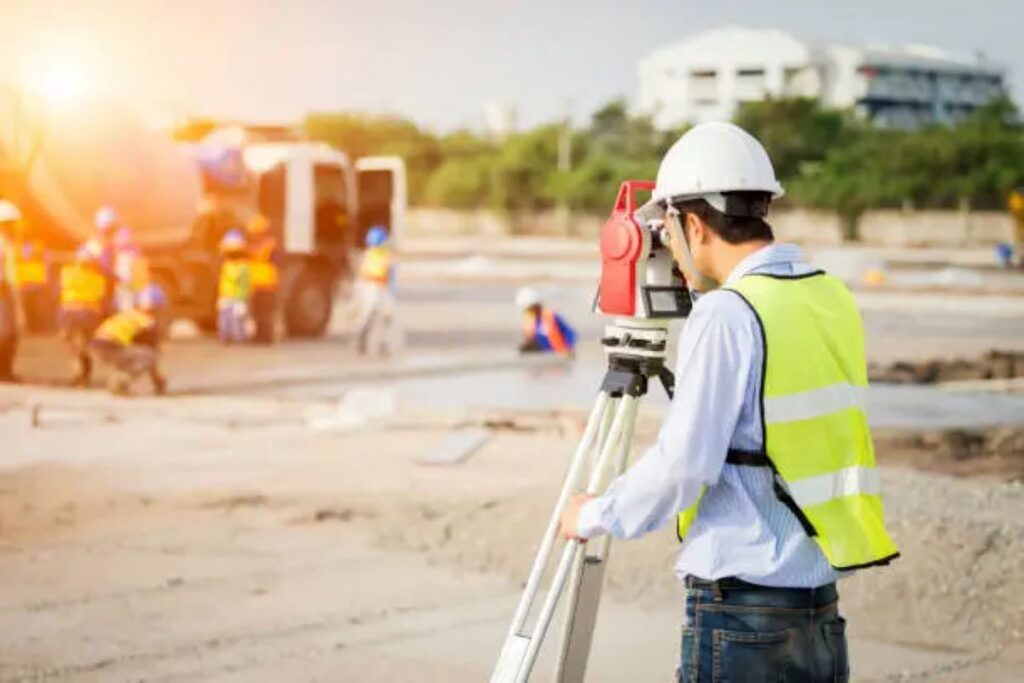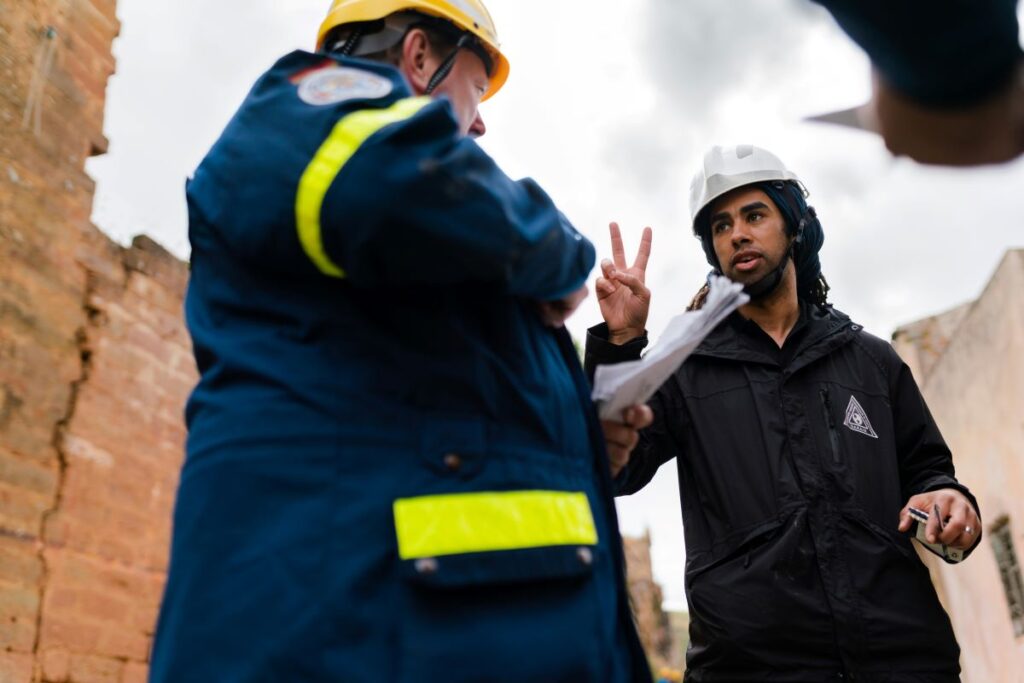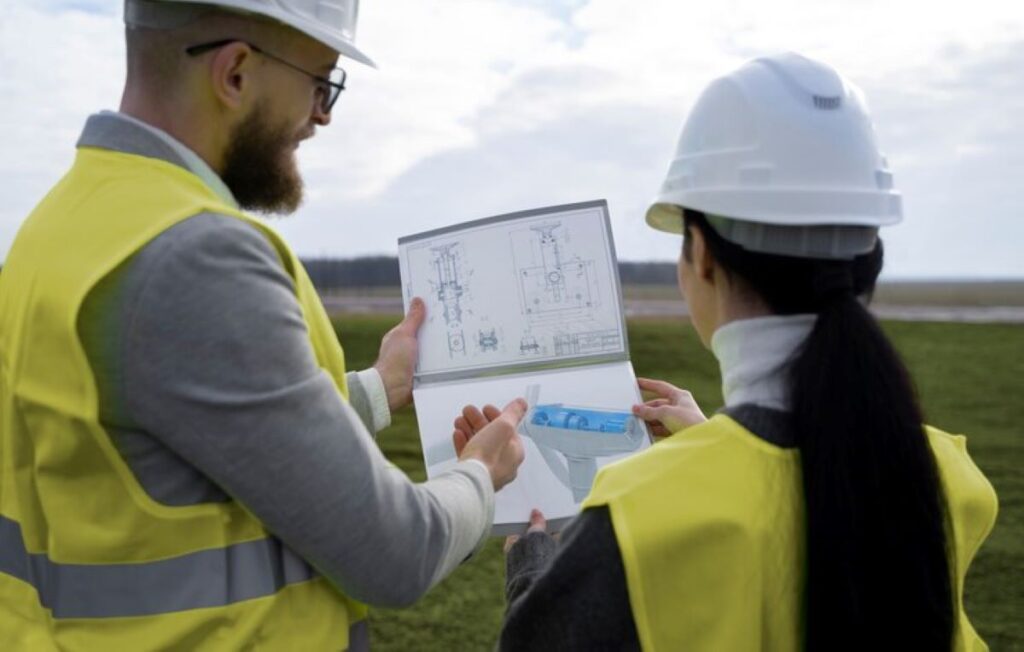The Important Role of Engineering Surveyors in Infrastructure Projects
Engineering surveyors are essential for successful infrastructure development. They use precise tools and their expertise to turn architectural designs into reality. These specialists ensure that every aspect of the project is perfectly aligned with the planned specifications.
The Impact of Engineering Surveyors on Infrastructure Projects
Engineering surveyors have a significant influence on various types of infrastructure projects, including:
- Transportation Networks: Ensuring accurate alignment of roads, railways, and bridges
- Urban Development: Precisely positioning buildings and utilities
- Water Management Systems: Correctly placing pipelines and drainage structures
- Telecommunications: Strategically installing network infrastructure
How Engineering Surveyors Add Value
Engineering surveyors provide critical value through:
- Using advanced technology for millimetre-precise measurements
- Collecting and analysing detailed spatial data
- Monitoring construction progress in real-time
- Verifying compliance with regulatory standards
The Importance of Engineering Surveyors at Each Project Phase
Their expertise is vital at every stage of the project:
- Planning Stage: Creating detailed site surveys and topographic maps
- Design Phase: Providing crucial data for engineering decisions
- Construction: Ensuring accurate implementation of designs
- Post-completion: Monitoring structural stability and settlement
The accuracy provided by engineering surveyors directly affects project results, cost efficiency, and long-term sustainability of infrastructure. Their role combines technical skills with practical problem-solving, making them irreplaceable in modern construction and development projects.
1. Site Preparation and Land Surveying Techniques
Accurate site preparation is crucial for the success of infrastructure projects, and it relies on thorough land surveying methods. With the use of modern surveying equipment, we can now collect data with greater precision and efficiency during this important stage.
Advanced Equipment and Technologies
Here are some of the advanced tools and technologies used in land surveying:
- Global Positioning System (GPS) receivers provide centimetre-level accuracy for establishing control points
- Total stations combine electronic distance measurement with angular readings for precise coordinate determination
- Digital levels enable accurate height measurements across construction sites
- 3D laser scanners capture detailed point clouds of existing structures and terrain
By combining these technologies, surveyors can create detailed digital terrain models and topographic maps that reveal important information such as:
- Ground surface contours and elevations
- Natural drainage patterns
- Existing utilities and infrastructure
- Vegetation coverage
- Geological features
Obstacle Identification and Risk Mitigation
A thorough site investigation helps us identify potential challenges that may arise during construction:
- Underground utility conflicts requiring relocation or protection
- Unstable soil conditions needing additional foundation support
- Heritage sites or environmentally sensitive areas requiring special consideration
- Access limitations affecting equipment and material delivery
- Flood-prone zones necessitating drainage solutions
These early insights enable project teams to develop targeted mitigation strategies and adjust designs accordingly. The detailed geospatial data collected during site preparation guides earthwork calculations, construction sequencing, and equipment positioning decisions.
Professional surveying services like Wumara Group employ these advanced techniques across NSW and QLD markets, delivering precise site preparation data for telecommunications infrastructure, educational facilities, and other major construction projects.
2. Enhancing Infrastructure Design through Quantity Estimation and Quality Control Measures
Precise quantity estimation is crucial for successful infrastructure projects, as it directly affects budgeting accuracy and resource management efficiency. Engineering surveyors use advanced computational methods to:
- Calculate earthwork volumes
- Determine material requirements for foundations
- Assess structural component quantities
- Measure drainage system specifications
- Estimate road construction materials
These detailed calculations help project managers optimise resource allocation and maintain cost control throughout the construction phase.
Quality control measures implemented by engineering surveyors ensure strict adherence to design specifications and industry standards. Key quality control activities include:
Dimensional Control
- Regular verification of structural alignments
- Monitoring settlement and deformation
- Checking vertical and horizontal positions
- Validating construction tolerances
Documentation and Reporting
- Detailed as-built surveys
- Regular progress monitoring
- Non-conformance identification
- Compliance documentation
Engineering surveyors use sophisticated measurement techniques to detect potential construction defects early, preventing costly remedial work. Through systematic monitoring and verification processes, they maintain the integrity of infrastructure components from foundation to completion.
The integration of Building Information Modelling (BIM) with surveying data enables real-time quantity updates and quality assessments. This digital approach streamlines project coordination and enhances decision-making capabilities across all construction phases.
Professional surveying services, such as those provided by Wumara Group, deliver comprehensive quantity estimation and quality control solutions across NSW and QLD markets, supporting major infrastructure projects with precision-driven methodologies.

3. Assessing Environmental Impact and Collecting Relevant Data for Sustainable Infrastructure Development
Environmental responsibility is a key aspect of modern infrastructure development. Engineering surveyors carry out detailed assessments of the environmental impact to protect fragile ecosystems while ensuring the success of the project.
The assessment process involves:
- Habitat Mapping: Detailed documentation of plant and animal species within the project area
- Waterway Analysis: Assessment of drainage patterns, water quality, and potential effects on aquatic ecosystems
- Soil Studies: Evaluation of soil composition, stability, and contamination levels
- Cultural Heritage: Identification and protection of significant Indigenous sites and cultural landmarks
Engineering surveyors use advanced methods to gather data and establish baseline environmental conditions:
- Topographic Surveys
- Geospatial Analysis
This collected data serves as the basis for:
- Development of strategies to reduce negative impacts
- Creation of plans for managing the environment
- Design changes to minimise harm to ecosystems
- Long-term monitoring programmes
The integration of environmental data with project requirements enables sustainable infrastructure solutions. Engineering surveyors collaborate closely with environmental scientists to identify critical conservation areas and suggest alternative construction methods when necessary.
Recent projects demonstrate the value of thorough environmental assessment. For example, during installations of telecommunications infrastructure, surveyors have successfully identified protected vegetation zones, leading to adjusted cable routing that preserved local ecosystems while maintaining project objectives.
This systematic approach to collecting environmental data helps find a balance between development needs and conservation goals, ensuring that infrastructure projects contribute to sustainable community development.
4. Embracing Technological Advancements in Surveying for Improved Accuracy and Efficiency
The integration of cutting-edge technology has transformed engineering surveying practices. Unmanned Aerial Vehicles (UAVs) equipped with advanced sensors now deliver unprecedented levels of accuracy and efficiency in data collection.
How Drones are Changing the Game
Modern drones fitted with LiDAR (Light Detection and Ranging) technology create detailed 3D point clouds of urban landscapes with millimetre-level precision. These aerial platforms access hard-to-reach areas and capture comprehensive datasets in a fraction of the time required by traditional surveying methods.
Key Advantages of Drone-Based LiDAR Surveying
The benefits of using drones for LiDAR surveying include:
- Rapid data acquisition across large areas
- Enhanced safety by reducing the need for ground personnel in hazardous zones
- Ability to penetrate vegetation canopy for accurate ground mapping
- Real-time data processing capabilities
Why Drones are Ideal for Urban Environments
The application of these advanced surveying tools proves particularly valuable in complex urban environments where:
- Dense building clusters require precise measurements
- Traffic and pedestrian flow limit ground-based surveying options
- Time constraints demand swift data collection
- Multiple elevation changes need accurate documentation
How Professional Surveyors are Using Drones
Professional surveying firms like Wumara Group harness these technological capabilities to deliver precise spatial information for infrastructure projects. The combination of UAV platforms with LiDAR sensors enables the creation of detailed digital terrain models, building footprints, and infrastructure asset documentation.
Real-World Success Stories
Recent telecommunications projects demonstrate the effectiveness of drone-based surveying, with teams efficiently mapping extensive network corridors while maintaining exceptional accuracy standards. This technological approach supports rapid decision-making processes and enhances project planning capabilities through comprehensive spatial data analysis.
5. Understanding the Distinction between Land Surveying and Engineering Surveying Practices
Land surveying and engineering surveying are two different but related fields within the surveying profession. Each area of expertise has its own specific role in infrastructure development and property management.
Characteristics of Land Surveying:
- Determines legal property boundaries
- Establishes ownership limits
- Creates cadastral maps and plans
- Resolves boundary disputes
- Supports real estate transactions
Focus of Engineering Surveying:
- Provides precise spatial data for construction
- Ensures structural alignment and positioning
- Monitors deformation and settlement
- Guides earthwork calculations
- Supports infrastructure design decisions
Engineering surveyors concentrate on delivering accurate spatial information essential for infrastructure project execution. Their work demands millimetre-level precision to support complex construction activities, structural installations, and alignment requirements. These professionals use sophisticated instruments to collect detailed measurements that guide engineers and construction teams throughout the project lifecycle.
Land surveyors specialise in defining and documenting property boundaries, creating legal descriptions, and maintaining property records. Their work forms the foundation of property ownership systems and helps prevent disputes between neighbouring landowners.
The expertise of both disciplines proves valuable in major infrastructure projects. While engineering surveyors ensure precise construction positioning and monitoring, land surveyors handle property boundary considerations that affect project planning and execution. This combination of skills helps deliver successful infrastructure outcomes while respecting property rights and legal requirements.

Conclusion
Engineering surveyors are essential members of project teams, providing expertise in precise measurements and data analysis for infrastructure projects. Their specialised knowledge ensures that projects meet regulatory requirements while maintaining high standards of accuracy and quality control.
The success of modern infrastructure projects relies on the careful work of engineering surveyors in several critical areas:
- Precise spatial data collection supporting informed decision-making
- Quality control measures guaranteeing construction accuracy
- Environmental impact assessments enabling sustainable development
- Advanced technology implementation for enhanced efficiency
- Regulatory compliance throughout project lifecycles
Professional engineering surveyors, such as those at Wumara Group, offer comprehensive solutions across NSW and QLD markets. They support telecommunications, government infrastructure, and construction sectors with proven expertise and competitive rates.
For engineering professionals looking to maximise project outcomes, partnering with qualified engineering surveyors is crucial. Their technical skills, combined with advanced surveying equipment and methods, provide the basis for successful infrastructure development.
Ready to enhance your next infrastructure project? Contact experienced engineering surveyors to ensure precision, compliance, and excellence in every aspect of your development.
Related : Construction Surveyors and Subsurface Utility Locating: A Critical Partnership

